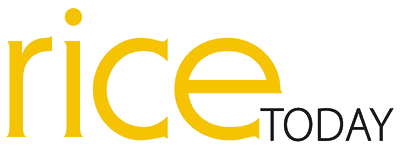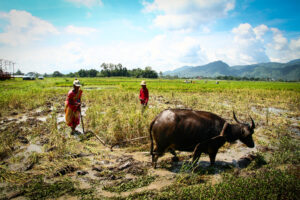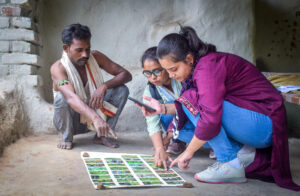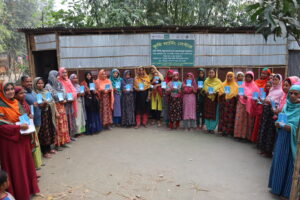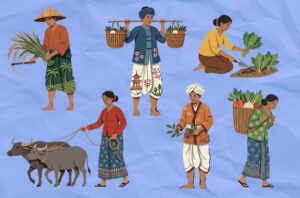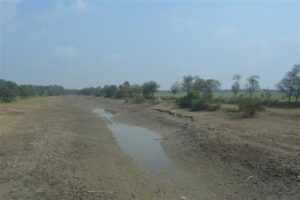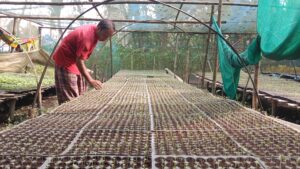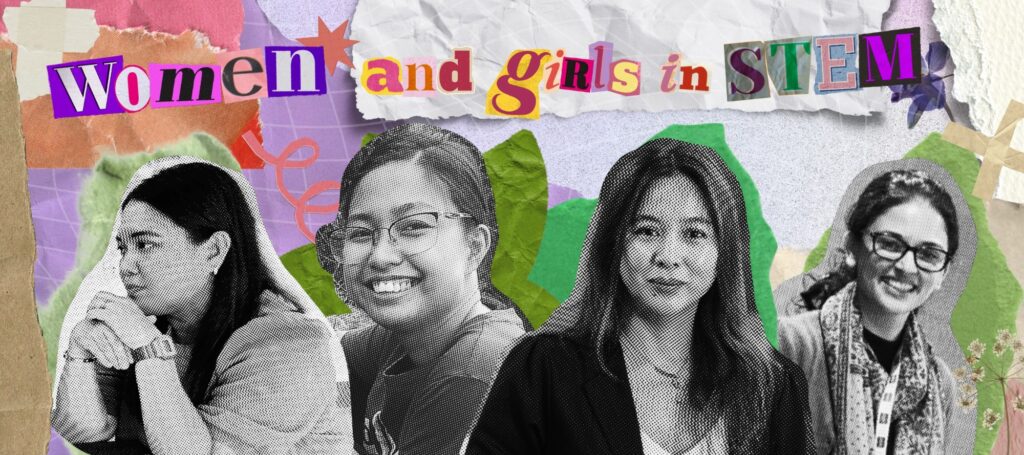
2025 marks the 10th year since the International Day of Women and Girls in Science (IDWGS) and the 30th year since the Beijing Declaration and Platform for Action were declared to elevate gender equality by leveraging women’s rights.
This year, IRRI is celebrating IDWGS with the theme “Her Rice Science” by exploring diverse career paths that girls and women can take to help shape the future of rice science. IRRI aims to close gender gaps by breaking stereotypes and fostering fun and empowering spaces for women inside the laboratory, along the office halls, and around the rice fields.
“A fun and empowering space for women and girls in rice science should be a multifaceted, vibrant hub where women and girls aren’t just represented but celebrated, and their potential is not just recognized but amplified.”, shared IRRI Gender and Livelihood Team Lead Jummai Yila. Spaces for women should foster exploration, collaboration, and mentorship, igniting curiosity and confidence while providing access to inspiring role models and a supportive community that believes in women’s power to innovate and drive progress in rice science, ultimately unlocking the full potential of innovation for a better future.
“Empowering women in STEM is not just about filling quotas, but about unlocking the full potential of science and innovation.”
~Dr. Jummai Yila, IRRI Country Representative for Uganda and Gender and Livelihoods Team Lead
Let us explore the lives of four women of IRRI from diverse backgrounds as they share their roles and tell fun stories at work.
1. Jo Anne Holly Torres-Ilagan
Holly is a communications and extension specialist, but she is an information management specialist on the Agresso platform. She worked under the Sustainable Soils sub-group under the Sustainable Impact through Rice-based Systems (SIRS) Department.
Holly worked mostly on Rice Crop Manager Enhancement Tools/Modules and Layanan Konsultasi Padi or LKP in Indonesia. Basically, her work entails bringing rice science to laymen by translating them into more digestible information, education and communication materials and delivering them through interactive seminars or workshops.
For you, what does the future of women in STEM look like?
“I think the future of STEM looks really promising, especially in agriculture. Digital tools like RCM and LKP are making farming more efficient and accessible. Women can play a big role in simplifying technical science so that farmers and communities can easily understand and use these innovations. Given the empathy skills of the women.”
How do we expand spaces in STEM for women?
“I think one way we could do this is for them to appreciate the beauty of science by increasing our visibility as a science institute showing women as role models.”
What are your hobbies?
“I enjoy painting, cooking, and playing mobile games.”
Share one thing you must always bring to the office, field, or laboratory.
“A notebook, a mobile phone for documenting, and yes, a lipstick.”
2. Aayushi Malhotra
Aayushi Malhotra is an Assistant Scientist in the Gender and Livelihoods Unit of the SIRS Department at IRRI. As part of the CGIAR GENDER Platform’s Evidence Module, her work synthesizes evidence on what works for men and women in diverse agrarian contexts amid changing climates, technologies, demographics, and aspirations. She uses this research information as proof when developing strategies and policy recommendations.
For you, what does the future of women in STEM look like?
“Women in STEM and education have come a long way, but there’s still plenty of ground to cover. I envision a better future where opportunities aren’t defined by gender but by passion, talent, and determination.”
How do we expand spaces in STEM for women?
“The fight for space in STEM begins outside it. Expanding opportunities for women starts with breaking mental barriers about gendered abilities at home, in schools, and workplaces.”
What are your hobbies?
“I love gardening, reading non-fiction, and playing badminton.”
Share one thing you must always bring to the office, field, or laboratory.
“One thing I always carry but often wish to ditch is my phone.”
3. Mishel Ciceron
Mitch leads the Stakeholder Engagement Unit at IRRI, where she focuses on building meaningful relationships with donors and partners to help strengthen IRRI’s global impact. She is deeply committed to creating connections that drive real change.
For you, what does the future of women in STEM look like?
In my line of work, I witness the many incredible things that women in STEM do every day. They thrive in the laboratories and experiment stations and create meaningful outcomes through their leadership and great networking efforts. I see the future of women in STEM as not just present but thriving – leading groundbreaking research and high-level engagements, making key decisions, and inspiring the next generation.
How do we expand spaces in STEM for women?
“It starts with support: mentorship, advocacy, and policies that truly uplift women. When we create environments where women feel heard, valued, and empowered, we don’t just expand spaces. We make them stronger and more inclusive for everyone.”
What are your hobbies?
I love playing mind games, and my favorite is Sudoku. There is something so satisfying about finding patterns, solving puzzles, and challenging myself to think critically. It helps me relax while keeping my mind sharp.
Share one thing you must always bring to the office, field, or laboratory.
My cellphone. It is more than just a device; it keeps me connected. Whether coordinating with colleagues, keeping track of important updates, or simply capturing moments, it helps me stay engaged and efficient no matter where I am.
4. Vina Salazar
Vina is currently an MS Scholar under the IRRI-KOICA-UPLB MS Sandwich Program, taking up MS Animal Science at UPLB. She previously worked as a research associate focusing on projects related to animal nutrition, specifically broiler nutrition. She focuses on studying diets and feed ingredients and their effects on the overall gut health and performance of broilers.
For you, what does the future of women in STEM look like?
“I see a lot of potential for women in STEM. I see an increase in leadership, innovation, and impact on a global scale, especially in the field of agriculture.”
How do we expand spaces in STEM for women?
“By providing support, limiting gender bias and stereotypes, and providing equal opportunities across all genders, we can create a space where women in STEM can thrive.”
What are your hobbies?
My hobbies are watching movies, eating, and exercising.
Share one thing you must always bring to the office, field, or laboratory.
Anywhere I go, I bring my phone with me because if I need to compute something, I can do it on my phone, or if I need to record or to take note of something, I can do it with my phone.
